Moisture Change of Modified Soil and Spatial–Temporal Evolution of Vegetation Cover for Bio-Slope Engineering in a Plateau Railway
Abstract
1. Introduction
2. Materials and Methods
2.1. Experimental Materials
2.2. Testing Methods
3. Results and Discussion
3.1. Moisture Constants of Modified Soil
3.2. Infiltration Coefficient of Modified Soil
3.3. Water Absorption Capacity of Modified Soil
3.4. Optimum Proportion
4. Field Spraying Test of Modified Soil
4.1. Testing and Analysis of Soil Moisture Characteristics
4.2. Vegetation Temporal–Spatial Characteristics Inversion
4.2.1. Inversion Index
4.2.2. NDVI Evolution Characteristics and Prediction After Application of Modified Soil
5. Discussion
6. Conclusions
- (1)
- The addition of peat soil to the gravel soil improves its field capacity and water absorption capacity, facilitating the absorption and storage of more water in a shorter period. However, increased peat soil content also raises the wilting point of modified soil, which is detrimental to plant survival under drought conditions. Additionally, excessive use of peat soil content can significantly increase the infiltration coefficient of the modified soil, adversely affecting slope stability.
- (2)
- The addition of a water-retaining agent to the gravel soil similarly enhances its field capacity and water absorption capacity, and it also lowers the wilting point, which benefits the absorption and storage of more water in a shorter time.
- (3)
- Field spraying of the modified soil indicates that, considering soil moisture constant, infiltration coefficient, and water absorption capacity, the proposed proportion—gravel soil with 80%, peat soil with 20%, water-retaining agent with 1.0‰, aggregate agent with 1.0‰, and fertilizer with 100 g/m2—is reasonable.
- (4)
- According to remote sensing data over 15 years since the completion of the railway construction, except for significant vegetation dieback in 2011 due to drought, the NDVI in the study region has generally improved since 2013. The NDVI of 3000 points has consistently increased year by year and stabilized around 2016, with the average NDVI rising from 0.59 to 0.67. The vegetation improvement on the rock slope cuttings over the past 15 years has shown a trend of slight improvement.
Author Contributions
Funding
Data Availability Statement
Acknowledgments
Conflicts of Interest
References
- Bordoloi, S.; Ng, C.W.W. The effects of vegetation traits and their stability functions in bio-engineered slopes: A perspective review. Eng. Geol. 2020, 24, 105742. [Google Scholar] [CrossRef]
- Karina, S.R.; Havana, V.G. Compressive strength of cement stabilized fly ash-soil mixtures. Cem. Concr. Res. 1999, 29, 673–677. [Google Scholar]
- Xuan, D.; Zhan, B.; Zheng, W. Innovative reuse of concrete slurry waste from ready-mixed concrete plants in construction products. J. Hazard. Mater. 2016, 312, 65–72. [Google Scholar] [CrossRef] [PubMed]
- Shao, Q.; Gu, W.; Dai, Q.Y.; Makoto, S.; Liu, Y. Effectiveness of geotextile mulches for slope restoration in semi-arid northern China. Catena 2014, 116, 1–9. [Google Scholar] [CrossRef]
- Abdi, E.; Azhdari, F.; Abdulkhani, A.; Mariv, H.S. Tensile strength and cellulose content of Persian ironwood (Parrotia persica) roots as bioengineering material. J. For. Sci. 2014, 60, 425–430. [Google Scholar] [CrossRef]
- Giustozzi, F. Polymer-modified pervious concrete for durable and sustainable transportation infrastructures. Constr. Build. Mater. 2016, 111, 502–512. [Google Scholar] [CrossRef]
- Aziz, M.M.; Palta, J.A.; Siddique, K.H.; Sadras, V.O. Five decades of selection for yield reduced root length density and increased nitrogen uptake per unit root length in Australian wheat varieties. Plant Soil 2017, 413, 181–192. [Google Scholar] [CrossRef]
- Das, G.K.; Hazra, B.; Garg, A.; Ng, C.W.W. Stochastic hydro-mechanical stability of vegetated slopes: An integrated copula based framework. Catena 2018, 160, 124–133. [Google Scholar] [CrossRef]
- Qing, L.; Qiu, Q.; Jun, Z.; Wang, J.; Qiang, Z. Fractal dimension of concrete incorporating silica fume and its correlations to pore structure, strength and permeability. Constr. Build. Mater. 2019, 228, 116986. [Google Scholar]
- Chen, J.; Chen, Z.; Ai, Y.; Xiao, J.; Pan, D.; Li, W.; Huang, Z.; Wang, Y. Impact of soil composition and electrochemistry on corrosion of rock-cut slope nets along railway lines in China. Sci. Rep. 2015, 5, 14939. [Google Scholar] [CrossRef]
- Chen, Z.Q.; Luo, R.H.; Huang, Z.Y.; Tu, W.G.; Chen, J.; Li, W.; Chen, S.N.; Xiao, J.Y.; Ai, Y.W. Effects of different backfill soils on artificial soil quality for cut slope revegetation: Soil structure, soil erosion, moisture retention and soil C stock. Ecol. Eng. 2015, 83, 5–12. [Google Scholar] [CrossRef]
- Das, G.K.; Hazra, B.; Garg, A.; Ng, C.W.W. Impact of hydrological and mechanical correlations on the reliability of vegetated slopes. ASCE-ASME J. Risk Uncertain. Eng. Syst. Part A Civ. Eng. 2017, 3, 04017029. [Google Scholar] [CrossRef]
- Evans, C.; Peacock, M.; Baird, A.; Artz, R.; Burden, A.; Callaghan, N.; Chapman, P.; Cooper, H.; Coyle, M.; Craig, E.; et al. Overriding water table control on managed peatland greenhouse gas emissions. Nat.-Int. J. Sci. 2021, 593, 548–552. [Google Scholar] [CrossRef] [PubMed]
- Yli-Halla, M.; Lötjönen, T.; Kekkonen, J.; Virtanen, S.; Marttila, H.; Liimatainen, M.; Saari, M.; Mikkola, J.; Suomela, R.; Joki-Tokola, E. Thickness of peat influences the leaching of substances and greenhouse gas emissions from a cultivated organic soil. Sci. Total Environ. 2022, 806, 150499. [Google Scholar] [CrossRef]
- Ahanger, M.A.; Qi, M.; Huang, Z.; Xu, X.D.; Begum, N.; Qin, C.; Zhang, C.X.; Ahmad, N.; Mustafa, N.S.; Ashraf, M.; et al. Improving growth and photosynthetic performance of drought stressed tomato by application of nano-organic fertilizer involves up-regulation of nitrogen, antioxidant and osmolyte metabolism. Ecotoxicol. Environ. Saf. 2021, 216, 112195. [Google Scholar] [CrossRef]
- Anokye, E.; Lowor, S.T.; Dogbatse, J.A.; Padiet, F.K. Potassium application positively modulates physiological responses of cocoa seedlings to drought stress. Agronomy 2021, 11, 563. [Google Scholar] [CrossRef]
- Martinez, A.; Labib, S.M. Demystifying normalized difference vegetation index (NDVI) for greenness exposure assessments and policy interventions in urban greening. Environ. Res. 2023, 220, 115155. [Google Scholar] [CrossRef]
- Rahetlah, V.B.; Salgado, P.; Andrianarisoa, B.; Tillard, E.; Ramalanjaona, V.L. Relationship between normalized difference vegetation index (NDVI) and forage biomass yield in the Vakinankaratra region. Madagascar. Livest. Res. Rural Dev. 2014, 26, S33–S36. [Google Scholar]
- Tian, F.; Brandt, M.; Liu, Y.Y.; Verger, A.; Tagesson, T.; Diouf, A.A. Remote sensing of vegetation dynamics in drylands: Evaluating vegetation optical depth (VOD) using AVHRR NDVI and in situ green biomass data over West African Sahel. Remote Sens. Environ. 2016, 177, 265–276. [Google Scholar] [CrossRef]
- Nutsford, D.; Reitsma, F.; Pearson, A.L.; Kingham, S. Personalising the viewshed: Visibility analysis from the human perspective. Appl. Geogr. 2015, 62, 1–7. [Google Scholar] [CrossRef]
- van Renterghem, T.; Botteldooren, D. View on outdoor vegetation reduces noise annoyance for dwellers near busy roads. Landsc. Urban Plan. 2016, 148, 203–215. [Google Scholar] [CrossRef]
- Gascon, M.; Triguero-Mas, M.; Martínez, D.; Dadvand, P.; Rojas-Rueda, D.; Plasència, A.; Nieuwenhuijsen, M.J. Residential green spaces and mortality: A systematic review. Environ. Int. 2016, 86, 60–67. [Google Scholar] [CrossRef] [PubMed]
- Gascon, M.; Zijlema, W.; Vert, C.; White, M.P.; Nieuwenhuijsen, M.J. Outdoor blue spaces, human health and well-being: A systematic review of quantitative studies. Int. J. Hyg. Environ. Health 2017, 220, 1207–1221. [Google Scholar] [CrossRef] [PubMed]
- Vienneau, D.; de Hoogh, K.; Faeh, D.; Kaufmann, M.; Wunderli, J.M.; Röösli, M.; SNC Study Group. More than clean air and tranquillity: Residential green is in dependently associated with decreasing mortality. Environ. Int. 2017, 108, 176–184. [Google Scholar] [CrossRef]
- Leung, T.M.; Xu, J.M.; Chau, C.K.; Tang, S.K.; Pun-Cheng, L.S.C. The effects of neighborhood views containing multiple environmental features on road traffic noise perception at dwellings. J. Acoust. Soc. Am. 2017, 141, 2399–2407. [Google Scholar] [CrossRef]
- Dzhambov, A.M.; Markevych, I.; Tilov, B.; Arabadzhiev, Z.; Stoyanov, D.; Gatseva, P.; Dimitrova, D.D. Lower noise annoyance associated with GIS-derived greenspace: Pathways through perceived greenspace and residential noise. Int. J. Environ. Res. Public Health 2018, 15, 1533. [Google Scholar] [CrossRef]
- Banerjee, B.; Pal, A.; Tiwari, A.K.; Kanchan, R. Assessing the land use dynamics and thermal environment using geospatial techniques in the industrial city of Chotanagpur Plateau Region, India. Environ. Monit. Assess. 2024, 196, 609. [Google Scholar] [CrossRef]
- Wu, S.; Zhang, Y.; Kang, W. Employing NDVI as vegetation correction variable to improve soil moisture measurements of mobile cosmic-ray neutron sensor near the Qilian Mountains. Geoderma 2024, 441, 116764. [Google Scholar] [CrossRef]
- Mozumder, C.; Tripathi, N.K.; Tipdecho, T. Ecosystem evaluation (1989–2012) of Ramsar wetland Deepor Beel using satellite-derived indices. Environ. Monit. Assess. 2014, 186, 7909–7927. [Google Scholar] [CrossRef]
- Zhang, X.; Zhou, Y.; Long, L.; Hu, P.; Huang, M.; Chen, Y.; Chen, X. Prediction of the spatiotemporal evolution of vegetation cover in the Huainan mining area and quantitative analysis of driving factors. Environ. Monit. Assess. 2023, 195, 776. [Google Scholar] [CrossRef]
- Mori, N.; Yamashita, M.; Inoue, M.N. Integration of satellite remote sensing and MaxEnt modeling for improved detection and management of forest pests. Environ. Monit. Assess. 2024, 196, 616. [Google Scholar] [CrossRef] [PubMed]
- Forestry Industry Standard of the People’s Republic of China. Forest Soil Analysis Method; China Standards Press: Beijing, China, 2000. [Google Scholar]
- Xing, Y.; He, Z. An NDVI-based Analysis of the Temporal and Spatial Characteristics of Vegetation Coverage in Guizhou Province. J. S. China Norm. Univ. (Nat. Sci. Ed.) 2021, 53, 84–95. [Google Scholar]

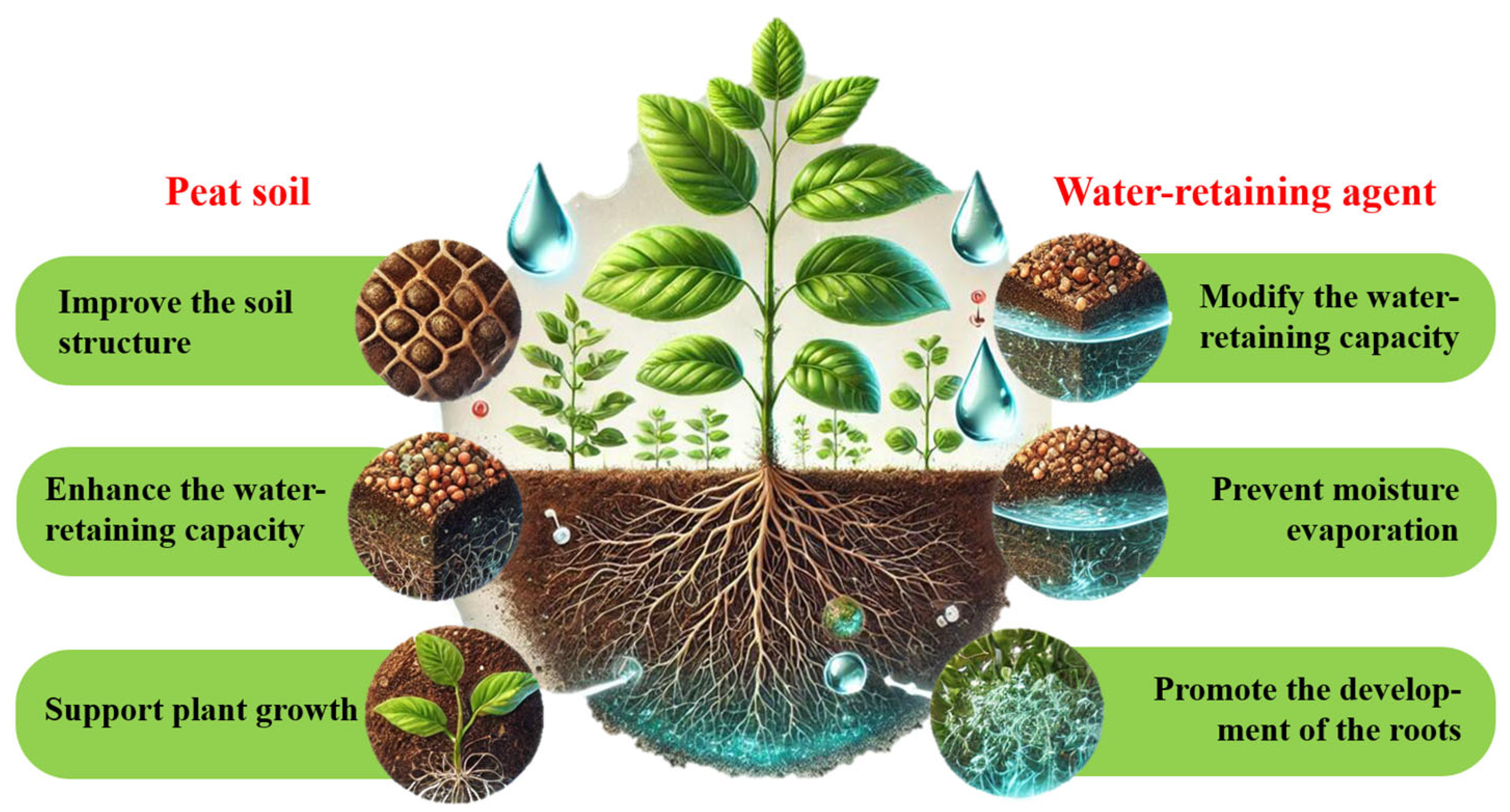
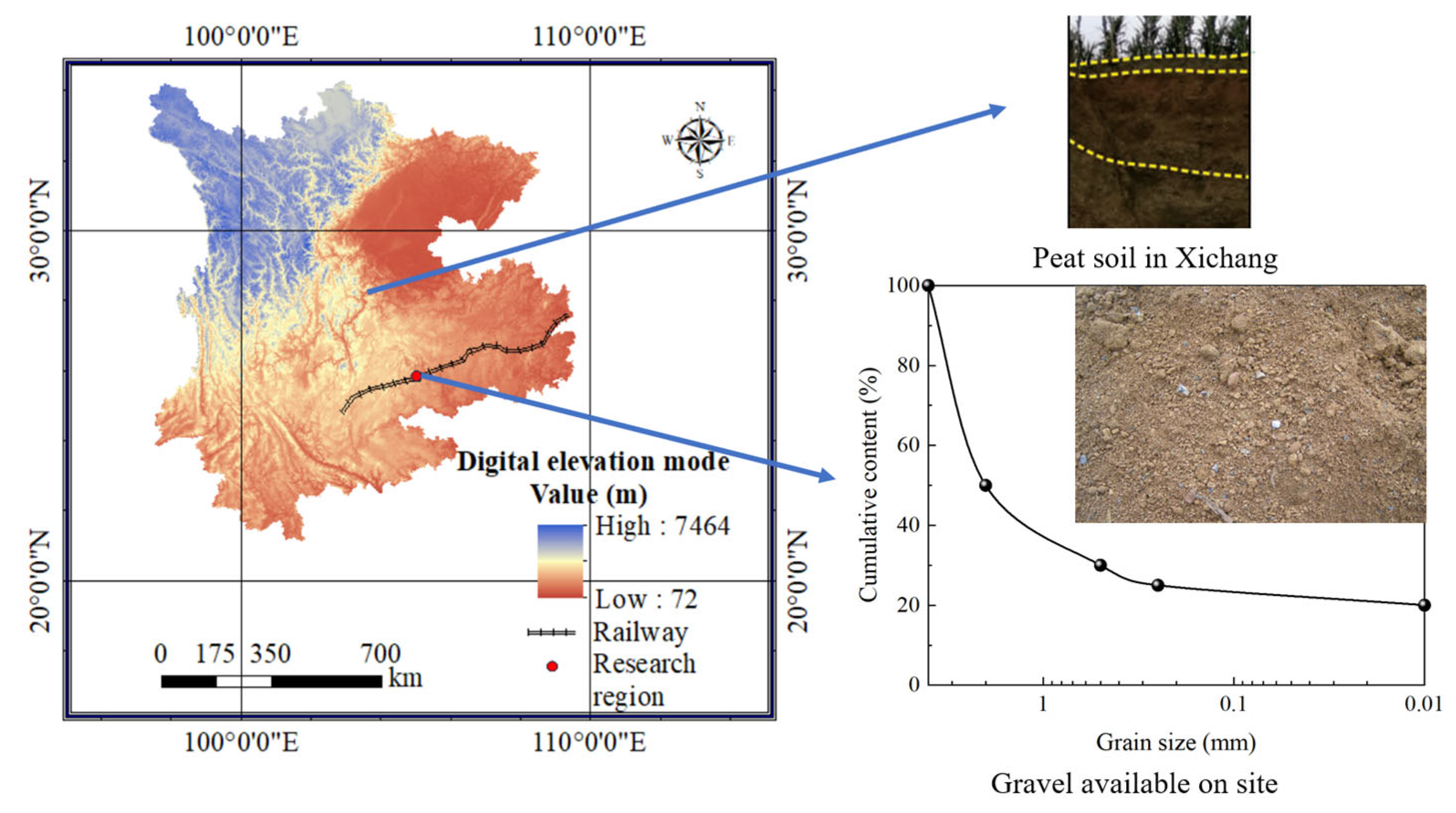
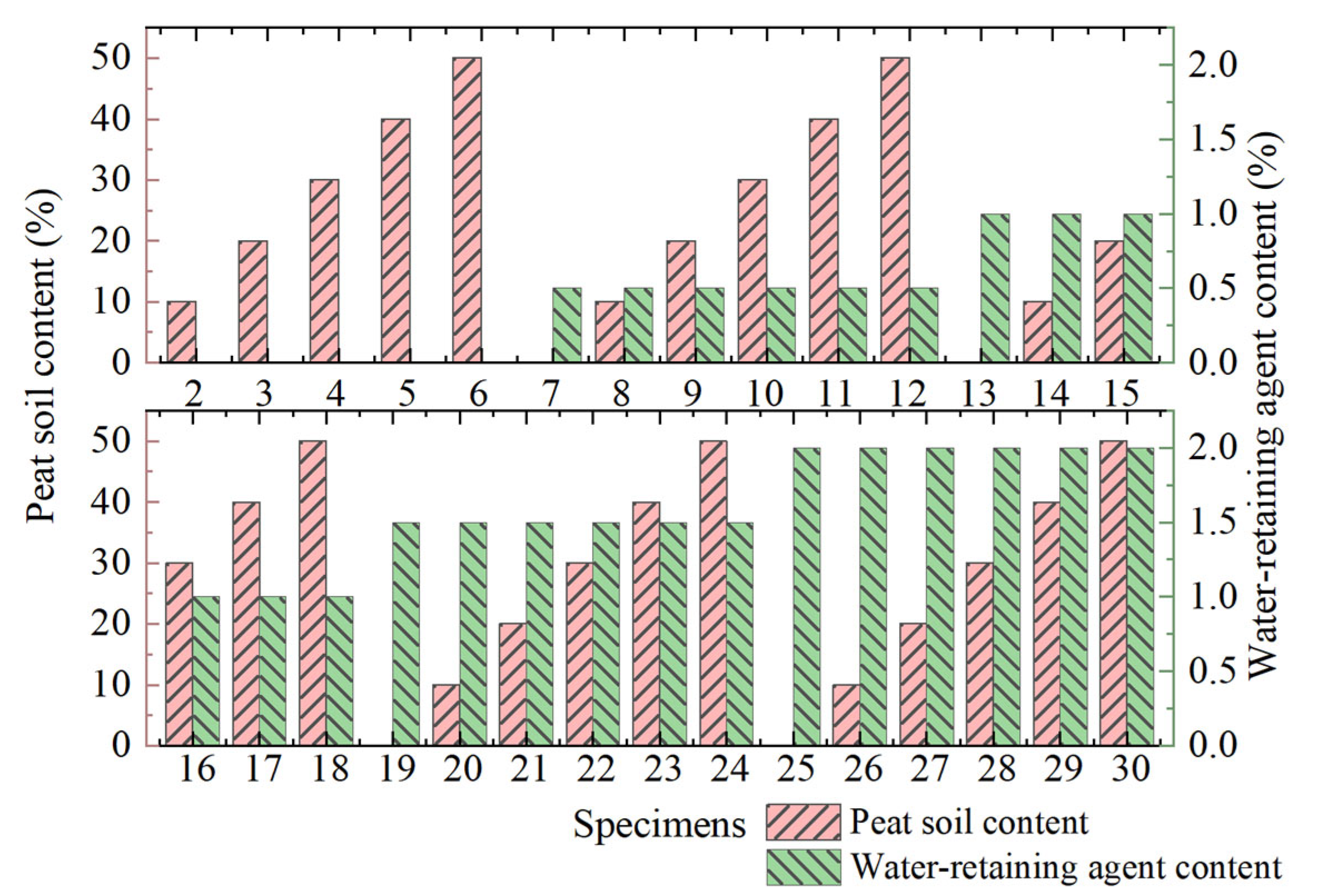



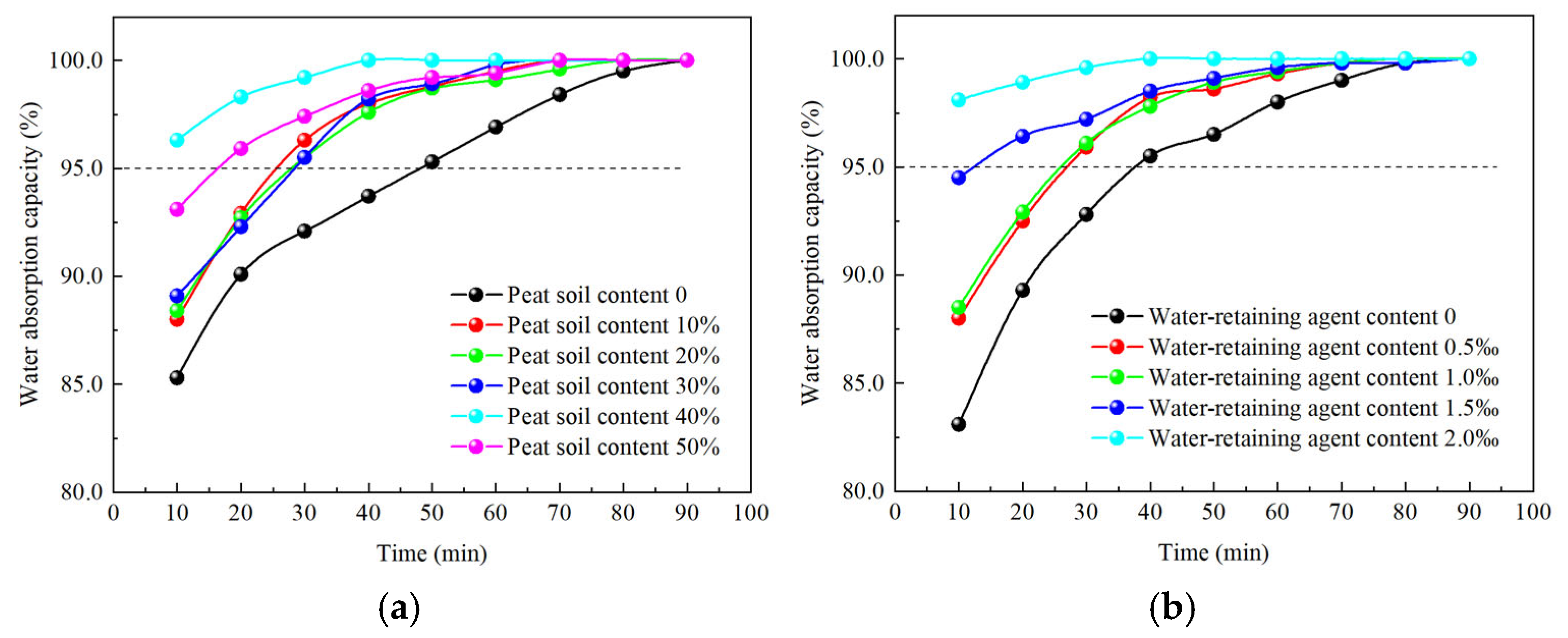





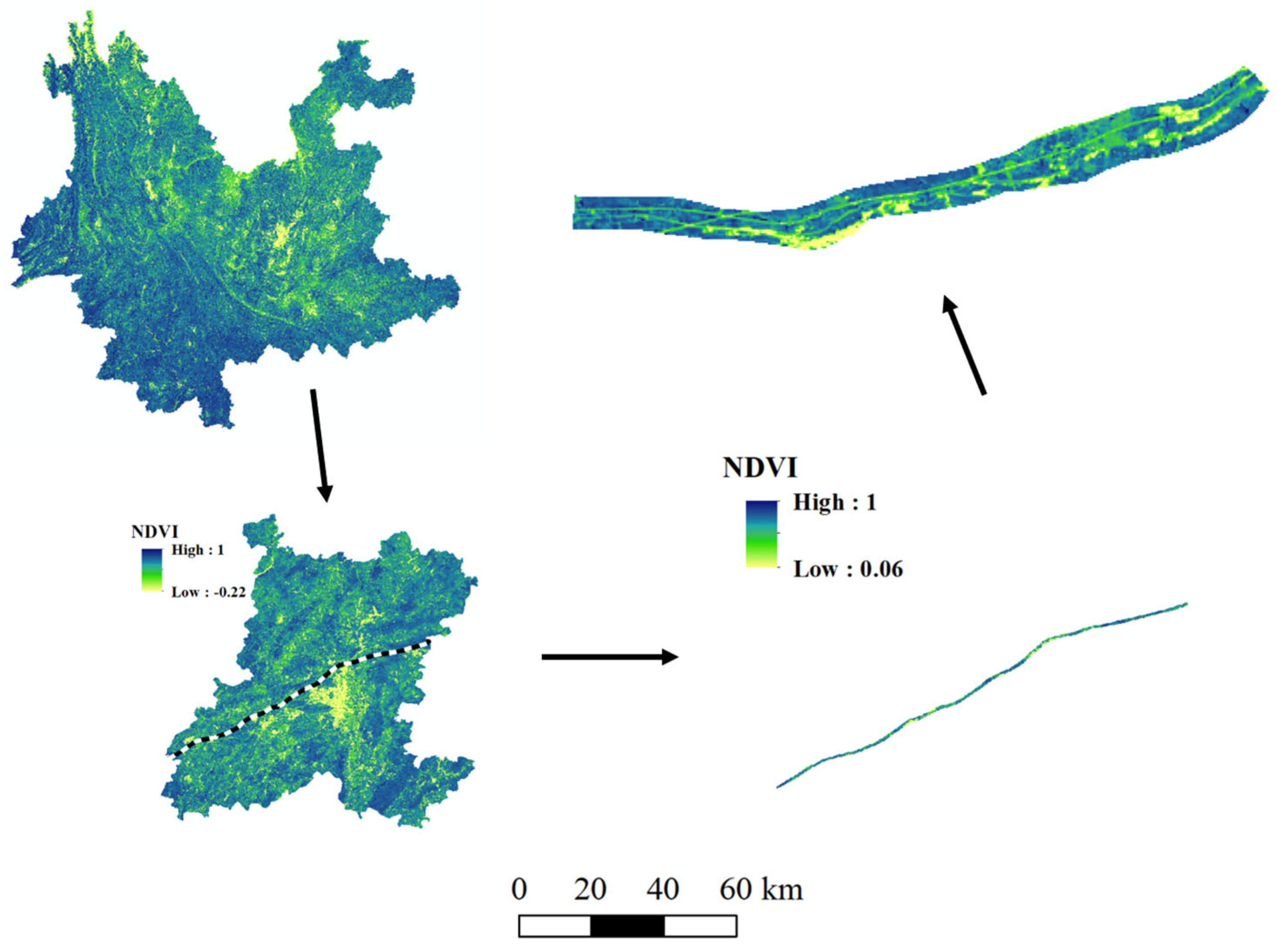
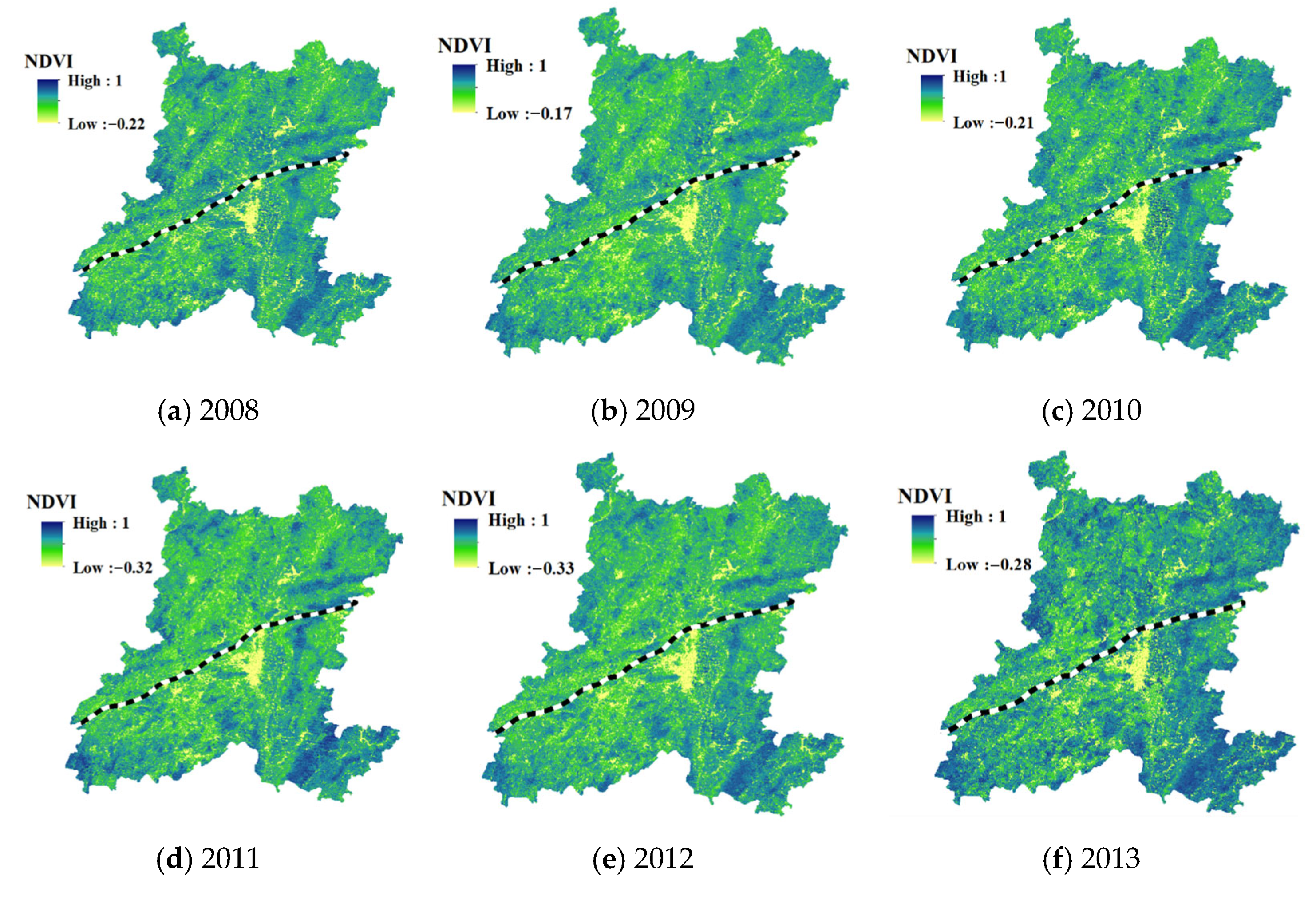
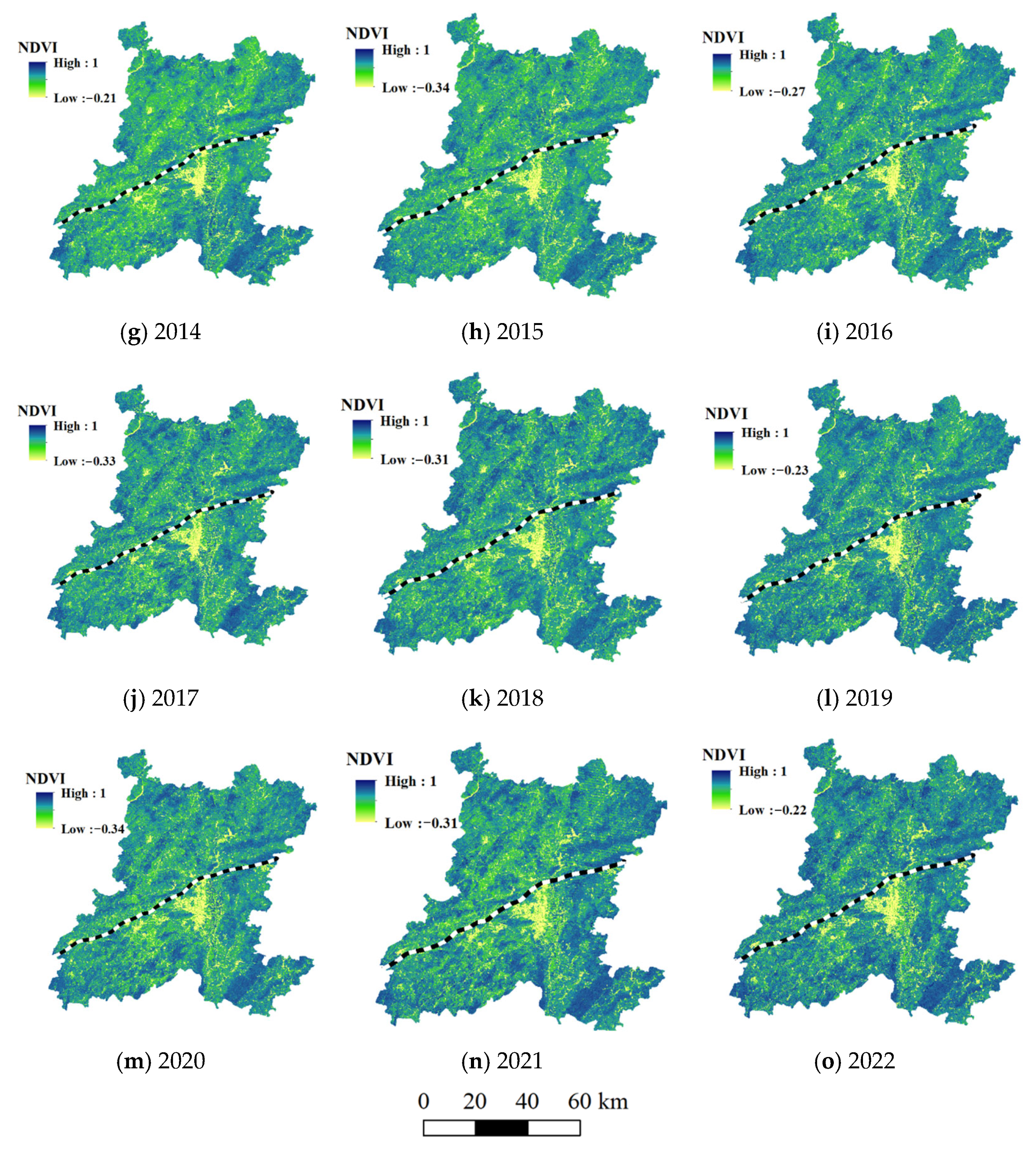
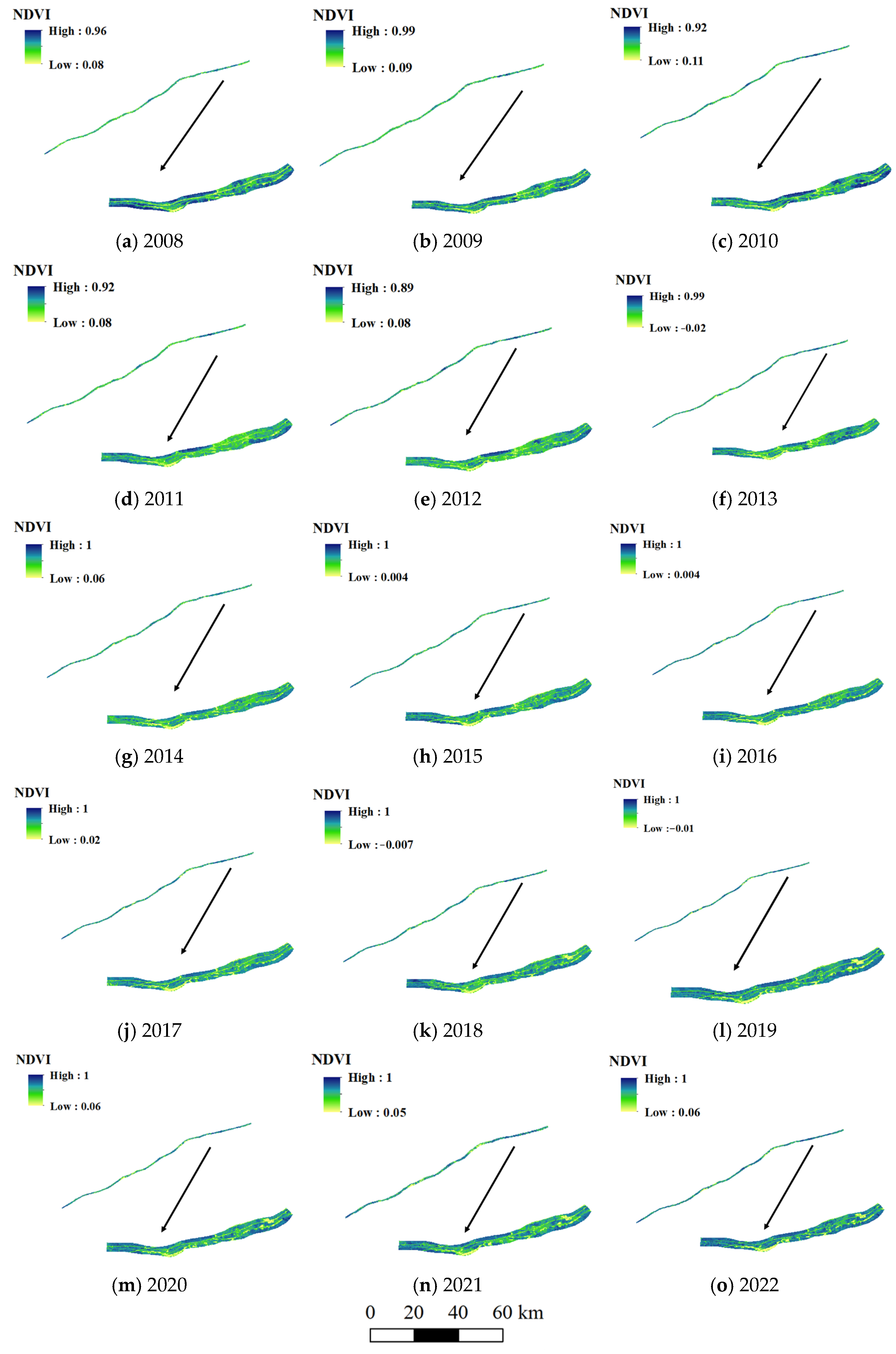

| Trend Line Slope Classification | NDVI Change Trend |
|---|---|
| Severe degradation | |
| Moderate degradation | |
| Light degradation | |
| Essentially unchanged | |
| Slight improvement | |
| Moderate improvement | |
| Significant improvement |
Disclaimer/Publisher’s Note: The statements, opinions and data contained in all publications are solely those of the individual author(s) and contributor(s) and not of MDPI and/or the editor(s). MDPI and/or the editor(s) disclaim responsibility for any injury to people or property resulting from any ideas, methods, instructions or products referred to in the content. |
© 2025 by the authors. Licensee MDPI, Basel, Switzerland. This article is an open access article distributed under the terms and conditions of the Creative Commons Attribution (CC BY) license (https://creativecommons.org/licenses/by/4.0/).
Share and Cite
Yu, G.; He, Z.; Wu, K.; Zhang, J.; Zhang, Y. Moisture Change of Modified Soil and Spatial–Temporal Evolution of Vegetation Cover for Bio-Slope Engineering in a Plateau Railway. Water 2025, 17, 778. https://doi.org/10.3390/w17060778
Yu G, He Z, Wu K, Zhang J, Zhang Y. Moisture Change of Modified Soil and Spatial–Temporal Evolution of Vegetation Cover for Bio-Slope Engineering in a Plateau Railway. Water. 2025; 17(6):778. https://doi.org/10.3390/w17060778
Chicago/Turabian StyleYu, Gui, Zhuoling He, Kun Wu, Junyun Zhang, and Yufei Zhang. 2025. "Moisture Change of Modified Soil and Spatial–Temporal Evolution of Vegetation Cover for Bio-Slope Engineering in a Plateau Railway" Water 17, no. 6: 778. https://doi.org/10.3390/w17060778
APA StyleYu, G., He, Z., Wu, K., Zhang, J., & Zhang, Y. (2025). Moisture Change of Modified Soil and Spatial–Temporal Evolution of Vegetation Cover for Bio-Slope Engineering in a Plateau Railway. Water, 17(6), 778. https://doi.org/10.3390/w17060778





